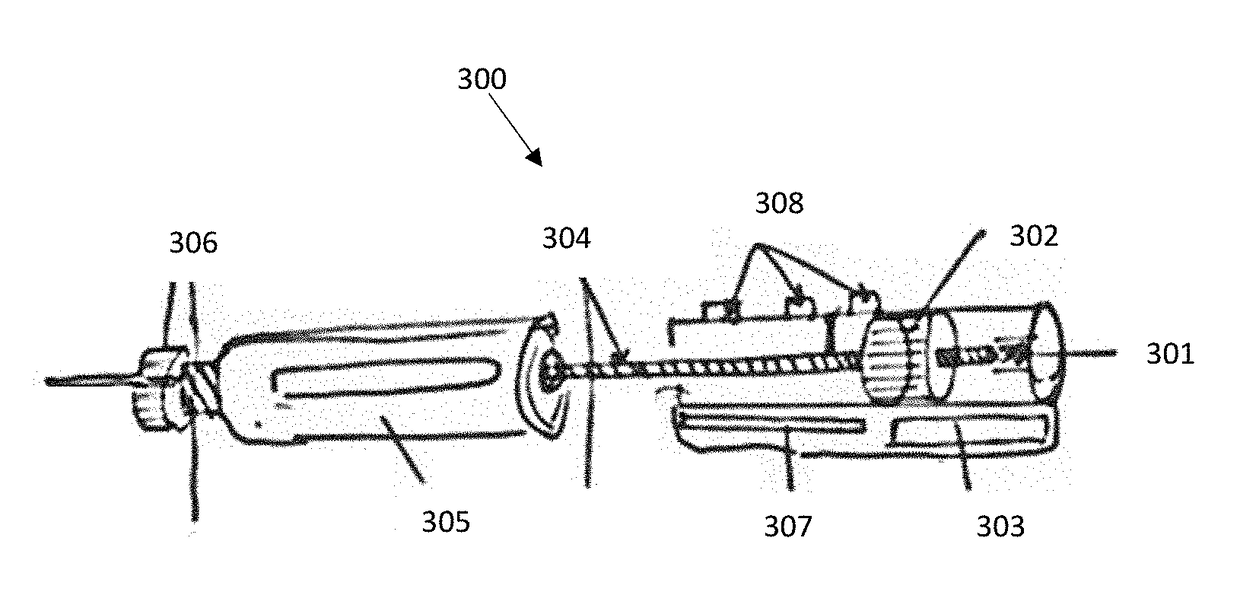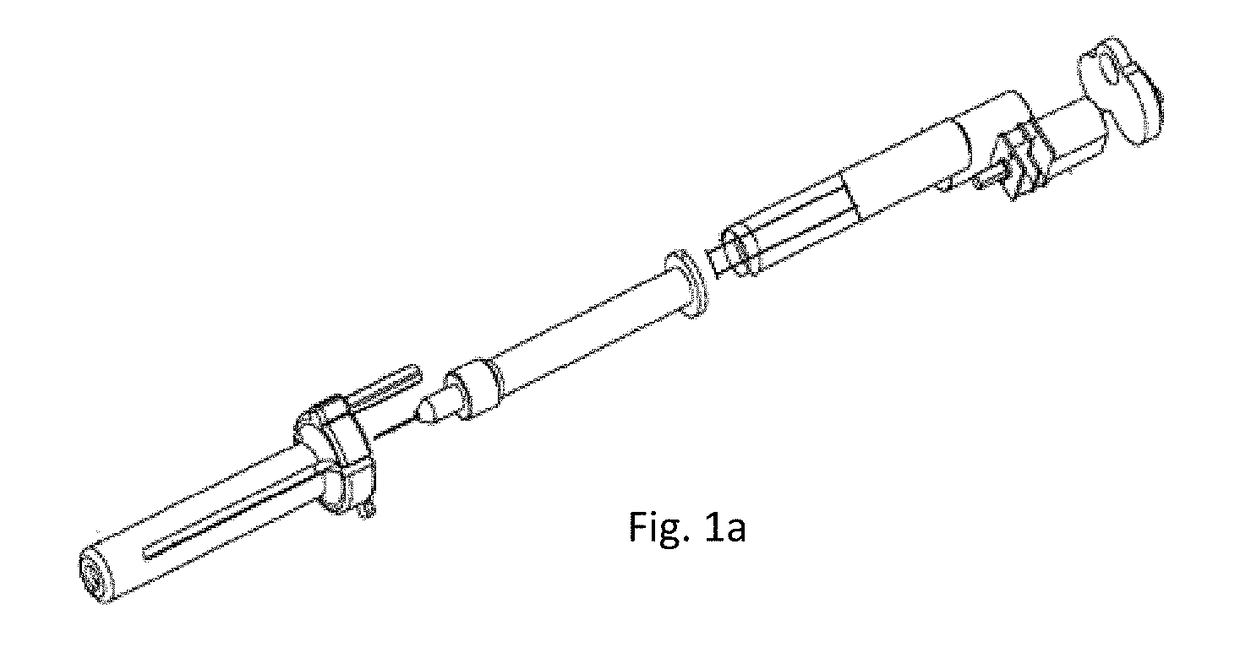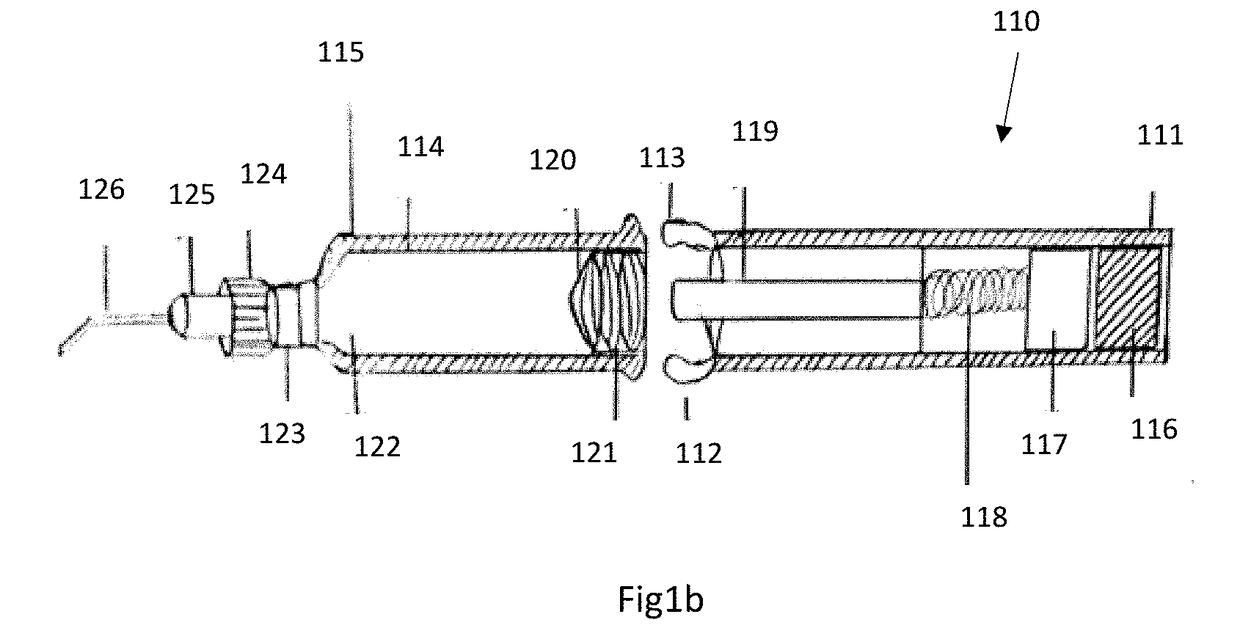Sterile protective cover comprising a device for opthalmic delivery
a protective cover and ophthalmic technology, applied in the direction of intravenous devices, ampoule syringes, eye treatment, etc., can solve the problems of lack of efficient drugs, low risk of ocular complications, and numerous problems of ophthalmic drug delivery methods, so as to prolong the use of the said device, improve the grip, and improve the effect of ophthalmic drug delivery
- Summary
- Abstract
- Description
- Claims
- Application Information
AI Technical Summary
Benefits of technology
Problems solved by technology
Method used
Image
Examples
Embodiment Construction
[0077]The present invention provides novel ophthalmic devices for intracameral delivery of therapeutic agents in the form a pen-injector for the treatment of ocular diseases and conditions in subject in need thereof. The present invention also provides a sterile plastic protective cover on a novel ophthalmic device for intracameral delivery of therapeutic agents in the form a pen-injector for the treatment of ocular diseases and conditions in subject in need thereof.
[0078]It is to be understood that the terminology used herein is for the purpose of describing particular embodiments of the invention and is not intended to be limiting.
[0079]Unless otherwise defined, all technical and scientific terms used herein have the same meaning as commonly understood by one having ordinary skill in the art to which the invention pertains.
[0080]As used herein, the term “ocular” or “ophthalmic” refers to any area of an eyeball including without limitation, the anterior chamber, the posterior chamb...
PUM
 Login to View More
Login to View More Abstract
Description
Claims
Application Information
 Login to View More
Login to View More - R&D
- Intellectual Property
- Life Sciences
- Materials
- Tech Scout
- Unparalleled Data Quality
- Higher Quality Content
- 60% Fewer Hallucinations
Browse by: Latest US Patents, China's latest patents, Technical Efficacy Thesaurus, Application Domain, Technology Topic, Popular Technical Reports.
© 2025 PatSnap. All rights reserved.Legal|Privacy policy|Modern Slavery Act Transparency Statement|Sitemap|About US| Contact US: help@patsnap.com



